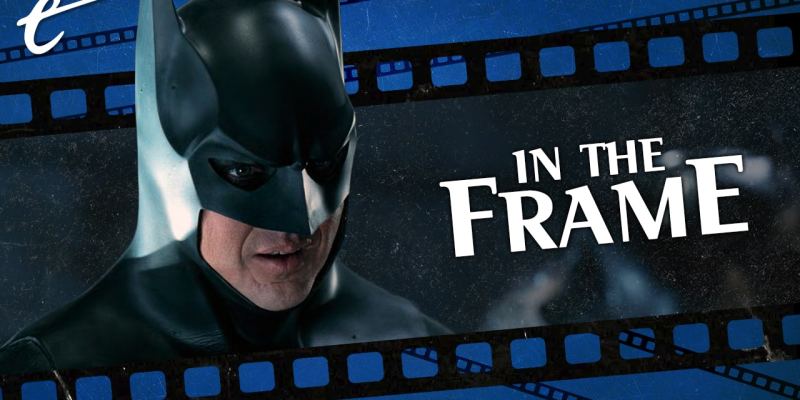“With luck, Gotham will have its first merry Christmas in years,” sighs the Mayor (Michael Murphy) early in Batman Returns. Naturally, mere anarchy is soon loosed upon the city. The Christmas that follows is anything but merry.
Tim Burton’s Batman had been the crown jewel of “the first real modern movie summer” and arguably kicked the modern blockbuster era into high gear. In hindsight, it is remarkable how much both Batman and Batman Returns feel like Tim Burton movies. “I think that everybody was on board with the fact that these were going to be a different type of superhero movie,” reflected Burton in 2017. “Because it felt new at the time, they really didn’t know what to say about it.”
However, while Batman was a blockbuster with a distinct aesthetic, Batman Returns is an even more esoteric franchise film. Even more than its predecessor, Batman Returns was an immediately polarizing film when it was released in June 1992. Writer Daniel Waters recalls attending early screenings and watching the lights come up, “It’s like kids crying, people acting like they’ve been punched in the stomach and like they’ve been mugged.”
It sparked no shortage of outrage. In her column for The Washington Post, Donna Britt lamented that Burton turned “kiddie favorites such as rubber duckies, clowns and circus fire-eaters into destroyers.” It’s no small irony that the choice of language evokes the moral panic stoked by the Penguin (Danny DeVito), who decries the social decay “that turned eagle scouts into crazed clowns and happy homemakers into catwomen.”
Batman Returns would earn less at the box office than its predecessor. Anonymous Warner Bros. executives complained to contemporary press, “It’s too dark. It’s not a lot of fun.” Corporate partners like McDonald’s voiced their discomfort with the dark and weird blockbuster, which prompted the follow-up Batman Forever to take a much more wholesome and conventional approach. To this day, Batman Returns remains a freak.

This makes Batman Returns a perfect alternative Christmas movie. As much as it exists as a sequel to Batman, Batman Returns has also been recognized alongside Edward Scissorhands and The Nightmare Before Christmas as the centerpiece of Tim Burton’s weirdo “Christmas Trilogy.” (It should be pointed out, despite the branding, that The Nightmare Before Christmas was actually directed by Henry Selick.)
Obviously, what makes a Christmas movie is highly subjective. Most critics will concede that it helps for a movie to be set on or around Christmas; others will argue that The Wizard of Oz is “spiritually” a Christmas movie, proving there might be exceptions. Often, it comes down to theme: The idea of family and togetherness is traditionally seen as vitally important for Christmas movies. This theme runs through even the most unconventional of Christmas movies.
In Krampus, a monster attack forces a fractured family to reconcile with one another, even as they end up trapped for eternity together. In Bad Santa, Thurman Merman (Brett Kelly) ends up in an unconventional surrogate family unit with Willie (Billy Bob Thornton) and Sue (Lauren Graham). At the end of Die Hard, John McClane (Bruce Willis) goes home with his estranged wife Holly (Bonnie Bedelia).
In contrast, Batman Returns eschews this idea. In his review at the time, critic David Kehr summarized the film as “the most expensive mood piece ever made.” That mood is one of pervasive isolation and loneliness. While it certainly shares that mood with Edward Scissorhands, particularly in its closing moments, Batman Returns tethers itself more firmly to the holiday. Batman Returns is the extremely rare movie about what it feels like to be alone at Christmas.
Batman Returns is saturated with Christmas imagery. The Red Triangle Gang attacks Gotham during the first attempt to turn on the Christmas tree lights, by wheeling a giant wrapped present to the town square. Shoppers bustle through the street, wearing coats to keep warm. There is snow on the ground. Characters frequently reference the holidays and their plans for the season ahead. Even the villain is polar-themed, hiding with the penguins in the ruins of Gotham Zoo.

Of course, Batman Returns filters all these elements through a rather macabre lens. Tying into the commercialist excesses of the season, Gotham City’s literal power broker is businessman Max Shreck. Although actor Christopher Walken insists that he modeled the portrayal on studio moguls like Sol Hurok and Sam Goldwyn, contemporary press noted that the character reminded “more than a few filmgoers of Donald J. Trump.”
Shreck exploits the spirit of the season for his own ends, using the holiday to present himself as a selfless businessman to the public. “Have a heart. Give the Constitution a rest,” he advises one reporter who is asking too many questions. “It’s Christmas.” Indeed, in one of the film’s many obvious metaphors, Shreck is planning to build a power station that will actually suck the power out of Gotham City. Shreck plans to take, rather than to give.
The Penguin tries to construct a familiar Christmas narrative around himself, positioning himself as an outsider looking to reconnect with his family. “I want to find out who I am, by finding my parents,” he tells Shreck. However, when he finds his parents, they are already deceased, preventing a heartwarming reunion. Batman Returns hints that this was carefully choreographed. “I think he knows who his parents are,” Bruce (Michael Keaton) tells Alfred (Michael Gough) early on.
Batman Returns is beautifully stark. Production designer Bo Welch builds on Anton Furst’s work on Batman, presenting an even more hostile and fascistic Gotham. Costume designers Bob Ringwood and Mary E. Vogt dress the cast in blacks, whites, and grays. Michelle Pfeiffer and Danny DeVito are caked in white makeup to give them a ghastly pallor. With his shock of white hair, Max Shreck is even named in honor of the actor who played cinema’s first vampire.

These choices, coupled with cinematographer Stefan Czapsky’s use of sharp contrast, create a film that feels cold to the touch. It evokes the German expressionist movement that inspired so much classic Batman continuity, but it also captures the feeling of the dark midwinter. There’s a brutality to Batman Returns, a movie that opens with an attempted child murder at Christmas and that features an attempted mass murder of children at its climax.
Batman Returns plays as a rejection of many of the tropes and conventions of the season, whether through Shreck’s cynical exploitation or the Penguin’s family’s more overt perversions. Instead, the film places an emphasis on the loneliness of Bruce Wayne. At the end of Batman, Bruce had paired off with photojournalist Vicki Vale (Kim Bassinger). She is gone by the start of Batman Returns, but she is not entirely forgotten; she is discussed twice. Her absence is noted.
Whereas Batman introduced Bruce Wayne as host ducking out of the fancy casino night fundraiser at his crowded mansion, Batman Returns establishes the billionaire as a more isolated figure. He first appears in Batman Returns sitting alone in his study, waiting for the Bat Signal. (He has prepared an elaborate series of mirrors to shine it in through his window.) There is nothing for Bruce beyond being Batman.
Batman Returns suggests that Bruce takes some pride in being unique, in being a freak who does not conform to society’s expectations. The film repeatedly hints his dislike of the Penguin is personal, rather than moral. After all, Bruce and the Penguin are mirrors of one another. “If his parents hadn’t 86’ed him, you two might have been bunkies at prep school,” Shreck tells Bruce. Batman Returns hints that some part of Bruce resents the Penguin for wearing his freakishness on the outside.
“Why are you so determined to prove this Penguin is not what he seems?” Alfred asks his employer. “Must you be the only lonely man-beast in town?” At the film’s climax, the Penguin grapples with Batman. “You’re just jealous because I’m a genuine freak and you have to wear a mask,” the Penguin gasps. Bruce concedes, “You might be right.” Bruce seems to have embraced his inner freak, but there is a lingering ambiguity about the question of whether he wants to be alone.

After all, there is a solid argument that Michael Keaton plays Bruce Wayne as a kid who never grew up. He takes great pleasure in the funhouse he has built for himself, including its cool slides hidden inside the iron maiden. (“I’ll take the stairs,” Alfred insists.) However, Batman Returns does tease Bruce with the prospect of a shared life. Bruce strikes up a relationship with Selina Kyle (Pfeiffer), a woman who seems to be just as much a freak as he is.
The irony of this relationship is that it is built on the secrets that they share but cannot acknowledge, their joint “difficulty with duality.” Bruce Wayne is Batman; Selina Kyle is Catwoman. Bruce and Selina awkwardly flirt in Wayne Manor, each trying to hide their physical and psychological scars from one another. Perhaps freer to express themselves, Batman and Catwoman flirt more openly on the rooftops, in leather and rubber with whips and masks.
However, it is not to be. Batman Returns ends with Selina acknowledging that she and Bruce can never be together. “I would love to live with you in your castle forever, just like in a fairy tale,” she tells Bruce. Unfortunately, this is not a fairy tale. There is no found family between Bruce and Selina, no important lesson imparted about the true meaning of Christmas. Instead, Selina disappears, and Bruce ends Batman Returns as he began, alone with only his faithful manservant for company.
Batman Returns meditates on the loneliness that one can feel at Christmas, that feeling of being apart while everybody else is together. The film is absurd and heightened, surreal and strange. However, it is also unique in the pantheon of holiday movies. In a year where so many people have spent so long apart and may even have to do the same over Christmas, Batman Returns resonates. “Come what may,” urges Alfred in the film’s closing moments, “merry Christmas, Mr. Wayne.”
Merry Christmas to you all, come what may.
